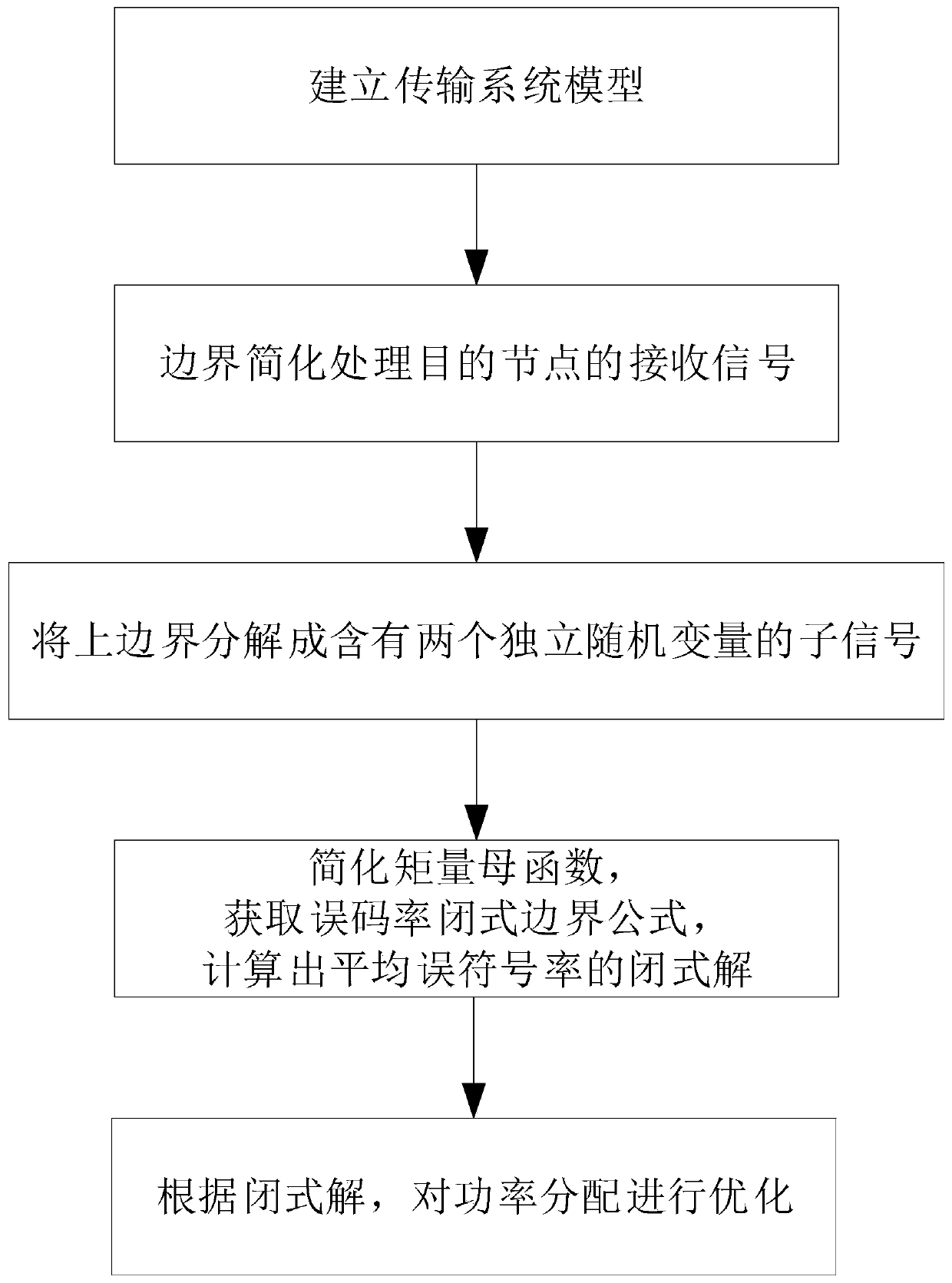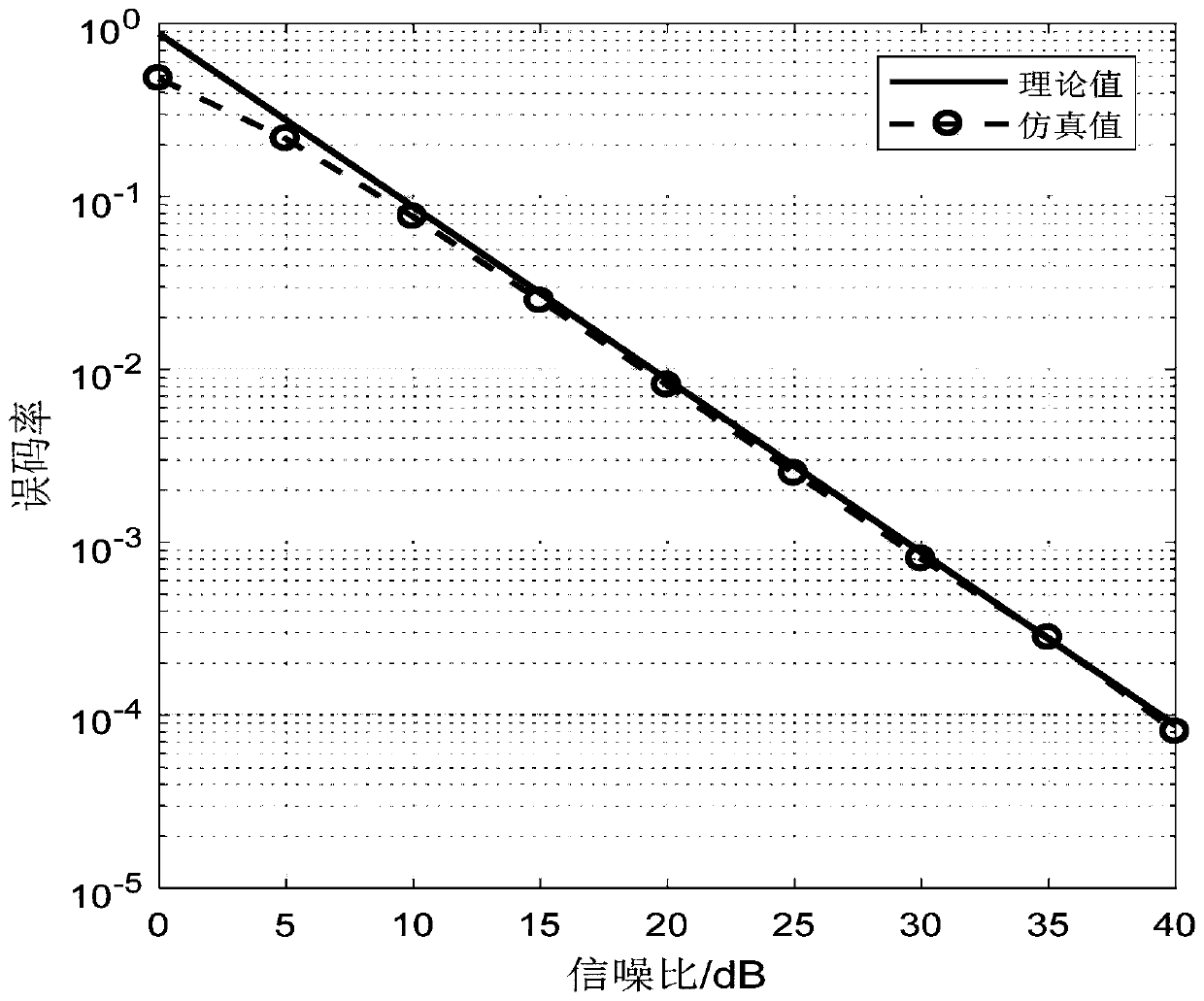Power domain NOMA cooperative transmission method and device based on bit error rate fairness
A technology of cooperative transmission and bit error rate, which is applied in the field of NOMA cooperative transmission in the power domain, can solve the problems of low user service quality and inability to meet the needs of large-scale user nodes with different data flows and high reliability information transmission.
- Summary
- Abstract
- Description
- Claims
- Application Information
AI Technical Summary
Problems solved by technology
Method used
Image
Examples
Embodiment 1
[0083] see figure 1 , this embodiment provides a power domain NOMA cooperative transmission method based on bit error rate fairness, and the power domain NOMA cooperative transmission method includes the following steps (steps 1-5).
[0084] Step 1. Establish a transmission system model. see figure 2 as well as image 3 , at least one relay node, at least two user nodes and at least one base station located in the center of the transmission area are set in the transmission system model. The relay node is a strong user node near the center of the transmission area, and the user node is a weak user node at the edge of the transmission area, and both the relay node and the user node are single-antenna nodes. The relay node acts as a half-duplex relay node and amplifies and forwards the linearly superimposed signals sent by two user nodes. The distribution coefficients of the two user nodes are α 1 and alpha 2 , and the transmitters share the same time domain and frequency ...
Embodiment 2
[0147] This embodiment provides a power domain NOMA cooperative transmission method based on bit error rate fairness, and the power domain NOMA cooperative transmission method is simulated and analyzed on the basis of Embodiment 1. The best order decoded by SIC is to detect in descending order of channel gain, so first s 1 The signal is detected, the s 2 The signal of s is treated as noise, and assuming s 1 The signal is not fully decoded, there is a pair of s 2 The signal is decoded with an error residual. And in the uplink non-orthogonal multiple access communication system, QPSK modulation is adopted to analyze the uplink SER performance of the single relay AF cooperative NOMA system.
[0148] see image 3 , according to two user channel gain assumptions Channel coefficient variance from user 1 to relay node R Channel coefficient variance from user 2 to relay node R Channel coefficient variance from relay node R to destination node D According to the simulated a...
Embodiment 3
[0153] This embodiment provides a power domain NOMA cooperative transmission device based on bit error rate fairness, and the device applies the power domain NOMA cooperative transmission method based on bit error rate fairness in Embodiment 1. The transmission device includes a model establishment module, an upper boundary acquisition module, a decomposition module, a bit error rate acquisition module and a power allocation optimization module.
[0154] The model building module is used to establish a transmission system model, and set at least one relay node, at least two user nodes and at least one base station located in the center of the transmission area in the transmission system model; the relay node is a strong User node, the user node is a weak user node at the edge of the transmission area, and both the relay node and the user node are single-antenna nodes; the relay node acts as a half-duplex relay node and performs linear superposition signals sent by two user node...
PUM
 Login to View More
Login to View More Abstract
Description
Claims
Application Information
 Login to View More
Login to View More - R&D
- Intellectual Property
- Life Sciences
- Materials
- Tech Scout
- Unparalleled Data Quality
- Higher Quality Content
- 60% Fewer Hallucinations
Browse by: Latest US Patents, China's latest patents, Technical Efficacy Thesaurus, Application Domain, Technology Topic, Popular Technical Reports.
© 2025 PatSnap. All rights reserved.Legal|Privacy policy|Modern Slavery Act Transparency Statement|Sitemap|About US| Contact US: help@patsnap.com



